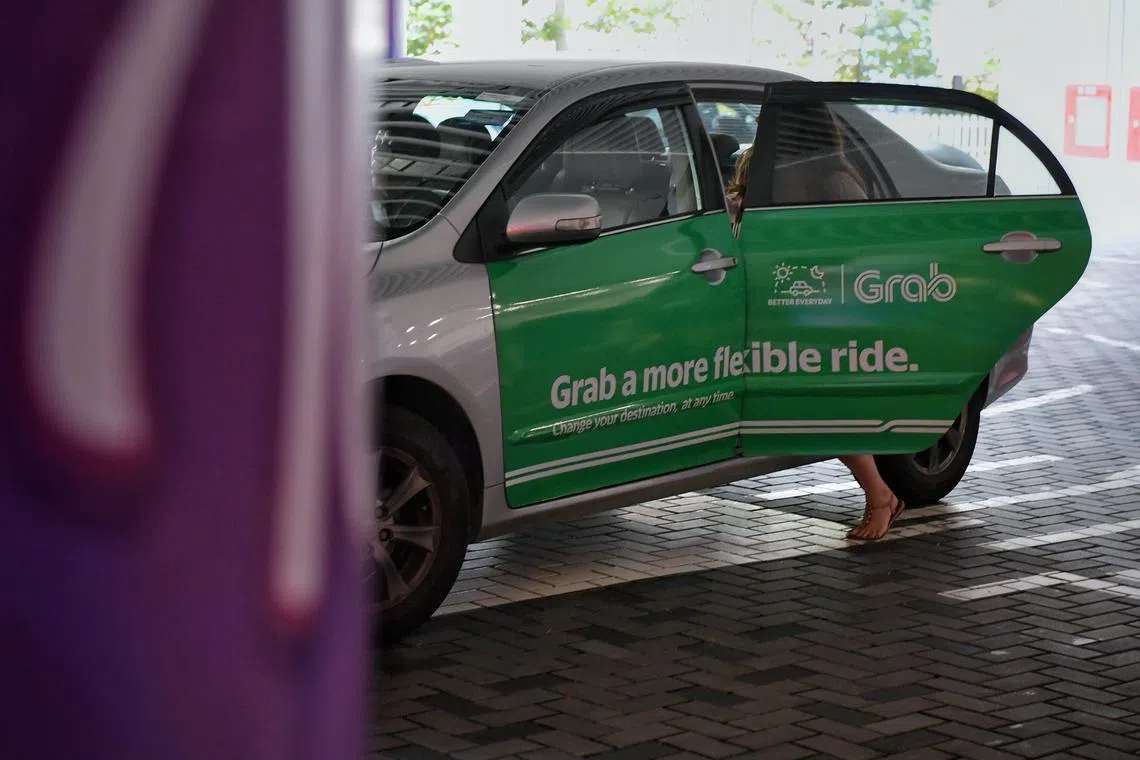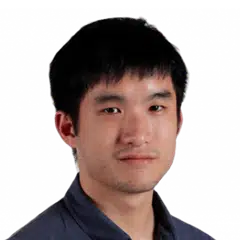Grab to introduce variable commission rate, says move will make driver compensation fairer
Sign up now: Get ST's newsletters delivered to your inbox

The new fare structure for drivers will take into account distance travelled and time taken to pick up passengers.
PHOTO: ST FILE
Follow topic:
SINGAPORE – On Nov 14, ride-hailing giant Grab will introduce dynamic commission rates for drivers who use its platform so that the distance travelled and time taken to pick up passengers are taken into account when calculating their earnings.
The move, which comes amid an ongoing driver crunch in the ride-hailing sector here, will ensure that its drivers are more fairly compensated and less likely to cancel less favourable bookings, said the Nasdaq-listed company on Tuesday.
This will not affect how passenger fares are calculated, it added in a set of questions and answers posted on its website.
Grab currently charges its drivers a fixed commission rate of 20.18 per cent per trip, including goods and services tax.
With the new driver compensation structure, this fixed commission rate will be replaced by a variable commission rate that will change from trip to trip.
This new “service fee” may be lower when drivers have to travel farther and spend more time getting to a pick-up point, Grab said.
Conversely, the service fee may be higher if the driver is closer to the pick-up point and spends less effort getting there.
During a series of trials that Grab conducted from April, the service fee charged to participating drivers went as high as 25 per cent and as low as negative 10 per cent with the new system, The Straits Times understands.
A negative service fee in this case means a driver will earn more than what a passenger is paying for the trip.
Grab said the higher service fees charged to drivers with closer pick-ups will be used to offset the higher fares paid to drivers who complete bookings with longer pick-up time and distance.
The new driver earning structure will apply to all of Grab’s transport services, except for GrabShare, Hire, Standard Taxi, GrabHitch and GrabCoach.
Grab said it will improve the new structure based on feedback before rolling it out to the rest of its transport services. More details will be announced when ready.
Grab said that out of the roughly 300 drivers who participated in its trials earlier in 2023, 98 per cent either reported an improvement or no change to their earnings.
During the trials, it observed a 7 percentage point improvement in the acceptance rate among drivers for trips with pick-up distances that are more than 3km.
This, it said, would have contributed to a more reliable service and a better passenger experience.
The current fare structure, which is based on the time and distance that drivers have to travel between a passenger’s pick-up and drop-off points, does not account for the time and effort that drivers take to pick up passengers, even though this part of the journey adds to their costs.
Because of this, Grab’s data showed that under the current structure, drivers are more likely to cancel a booking if they think the pick-up distance or time is too long.
While Grab drivers are currently incentivised to accept trips with far pick-up points through a $3 cash bonus if they have to travel more than 3km to reach the passenger, this is a flat bonus that does not change even if the distance to the pick-up point far exceeds 3km.
Drivers have complained about missing out on the $3 bonus by the smallest of margins. In one reported case in February, a driver had missed out on the far pick-up bonus by mere centimetres.
With the new structure, this far pick-up bonus will no longer apply.
Grab said: “We believe the new driver fare structure is a better solution that is fairer for our partners, as they are now compensated for their full end-to-end journey.”
Some Grab drivers who participated in the company’s earlier trials said the new compensation structure is more transparent.
Mr Kelvin Lam, 48, said he initially questioned whether the new system would ultimately lead to the company taking more in commission from drivers, instead of benefiting them.
But he noted that the current high demand for ride-hailing services and the lack of active private-hire cars on the road mean that drivers are often assigned farther rather than nearer pick-ups, especially during peak hours.
“For some trips, Grab takes more, but for most trips they will take less. For more than half of the trips, there is no real change,” he added.
Another plus point is that the new system will compensate drivers in cases where the pick-up point is nearby but getting there takes a long time, whether it is due to traffic jams or road closures.
Mr Raymond Wee, 51, said he has seen an increase in earnings of about 3 per cent to 5 per cent, noting that for every 20 trips he makes, the pick-up distance for most of them fall within the 2km to 3km range.
He added: “Now, even if we don’t get the $3 far pick-up bonus, we will still be compensated. That is why I think it is a very fair system.”
Ms Yeo Wan Ling, adviser to the National Private Hire Vehicles Association (NPHVA), said drivers have shared how they need to drive longer to get to passengers, which has led to added costs, especially given increased petrol prices.
Noting that the NPHVA has been in consultations with Grab about the new driver fare structure, she added: “While it may address some immediate pain points, we’d want to ensure the medium-term earnings of our drivers remain protected.”
Grab’s announcement comes less than two weeks after rival Gojek made changes to its own driver commission rate
Analysts have said that Gojek’s move to cut its commission is likely an attempt to attract drivers to its platform, and this is likely to intensify competition.
Mr Li Jianggan, chief executive of venture capital firm Momentum Works, said a key challenge for Grab post-Covid-19 has been lack of available drivers and productivity.
“Grab’s mobility business needs to maximise its matching success rate and efficiency, so that both drivers and passengers will stay on the platform for the long term,” he added.
Associate Professor Walter Theseira, a transport economist at the Singapore University of Social Sciences, said other operators will likely follow suit if Grab’s move increases driver engagement and loyalty.
But it may be harder for smaller players to implement it efficiently if they do not have the same data and analytics capabilities, he noted.


